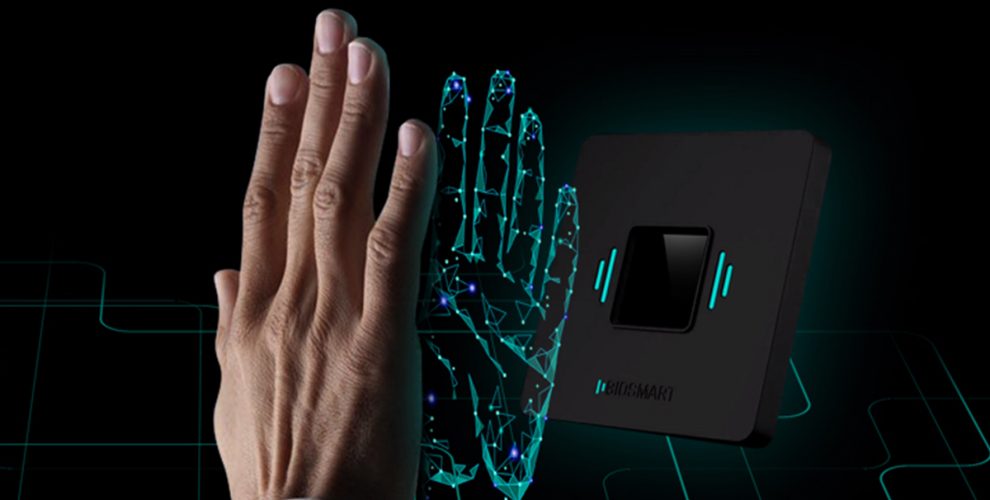The palm vein scanner is deemed to be one of the latest inventions of the golden age utilizing an advanced and contactless palm vein technology to identify any personality. The palm vein technology makes use of the palm vein pattern of a human hand for instant verification of an individual through his biometric attributes.
Amongst all the modalities of Biometrics, palm vein technology is one of the most non-invasive and accurate. Biometric authentication methods uniquely identify the vein patterns of anyone’s hands. As the necessity for secure and prompt verification of an individual’s identity is shooting up in multiple domains of modern life, a robust technique of patrimonial biometric authentication system becomes obligatory.
Consequently, palm vein recognition technology finds a variety of applications in banks, ATMs, hospitals, supermarkets, airports, and all other highly crowded venues.
Top 5 Reasons to Adopt Palm Vein Scanner
Adopting biometric palm vein technology in diversified sectors can bring revolution in multiple industries in the near future. Here are the top five reasons that you can consider implementing the palm vein scanner for efficient human identification, authentication, and authorization.
1. High-Level Accuracy
The palm vein scanner provides highly accurate results as the device captures the palm vein pattern which is complicated and unique to every individual, even twins cannot have identical palm vein patterns. The device can be a welcome change offering high-level accuracy to the already stressed and inaccurate mode of authentication.
2. High Security
The palm vein scanner is highly secure as it utilizes the vascular personal identification technique to identify and authenticate a person. The vascular pattern like the palm vein pattern cannot be duplicated as it is present inside an individual’s body and forgery is next to impossible. Consequently, amongst all the biometric modalities, palm vein technology is considered to be highly secure for it is impossible to steal or read the palm vein patterns.
3. Increased Longevity
Palm vein sensor identification through a palm vein scanner does not require direct contact with the human attribute and an individual can simply hover his/her hand over the device. This contactless feature increases the longevity of a palm vein scanner. The palm vein scanner uses infrared light that tends to increase the life of the device for users will not touch the device each time they identify themselves.
4. More Hygienic
As the palm vein scanner employs contactless personal identification technology, the device offers the advantage of being more hygienic than other biometric authentication devices. Direct contact of an individual’s hand is not required for identification or authentication and hence looking at the hygiene aspects, the device becomes more suitable for domains exercising a high volume of use.
5. High Reliability
The palm vein scanner is considered to be the most reliable mode of human identification, authentication, and authorization as it possesses the lowest FRR and FAR. The false rejection rate (FRR) is approximately around 0.01% while the false acceptance rate (FAR) is roughly around 0.00008%.
Applications of Palm Vein Technology
The possibilities to adopt the palm vein scanner span a wide range of vertical markets involving financial, commercial, healthcare, banking, enterprise, security, educational facilities, and more.
Employing the palm vein scanner at banks and ATMs to avoid forgery and increase server security. For precise biometric time attendance systems in small to large organizations, enterprises, ports, plants, warehouses, etc.
To avoid forgery of identity cards and passports through secure biometric palm vein recognition. Control access for the users/visitors at offices, industries, hospitals, and sectors involving highly sensitive areas.
It is utilized for arenas requiring high security such as laboratories, home security, and many more.
Conclusion
Shaping technological advancements, introducing innovative devices, and weighing the success of change initiatives on Biometrics beyond the fingerprint and iris recognition process. By introducing palm vein recognition systems. Biometric-based innovations such as the introduction of palm vein scanners offer tremendous opportunities to create solutions that lay the foundation of a paradigm shift in the way a human is identified and authenticated.
I’m happy that I was able to complete my graduation in this Top Biomedical Engineering college in Coimbatore. I hope this blog is informative, and I thank the college for allowing me to learn, write, and share the concept of today’s technology.
Blog by,
Sibiya A (20BEBME040)
Department of Biomedical Engineering



